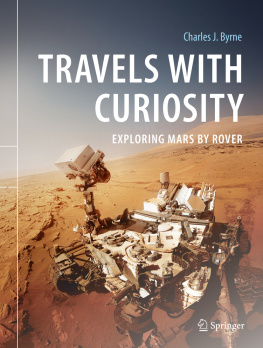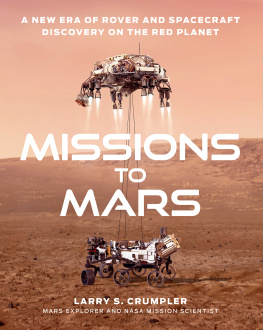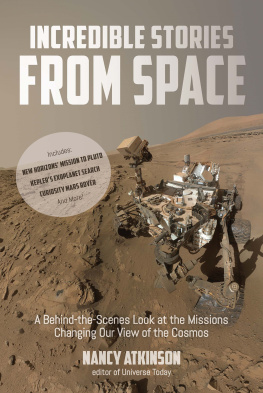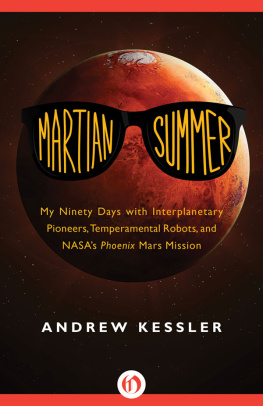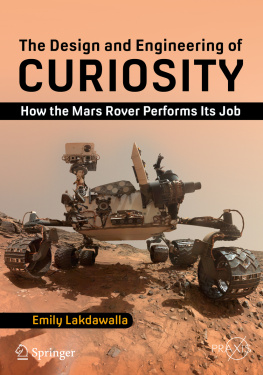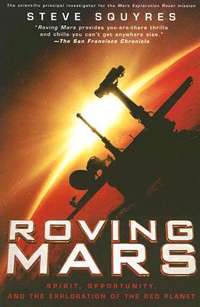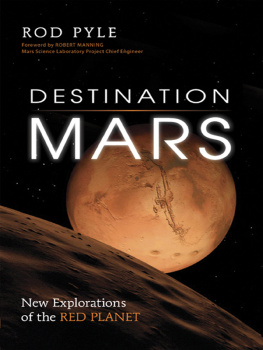RED
ROVER
Inside the Story of Robotic Space Exploration,
from Genesis to the Mars Rover Curiosity
ROGER WIENS

BASIC BOOKS
A MEMBER OF THE PERSEUS BOOKS GROUP
NEW YORK
Copyright 2013 by Roger Wiens
Published by Basic Books,
A Member of the Perseus Books Group
All rights reserved. No part of this book may be reproduced in any manner whatsoever without written permission except in the case of brief quotations embodied in critical articles and reviews. For information, address Basic Books, 250 West 57th Street, 15th Floor, New York, NY 10107-1307.
Books published by Basic Books are available at special discounts for bulk purchases in the United States by corporations, institutions, and other organizations. For more information, please contact the Special Markets Department at the Perseus Books Group, 2300 Chestnut Street, Suite 200, Philadelphia, PA 19103, or call (800) 810-4145, ext. 5000, or e-mail .
All images reprinted with permission.
Book designed by Linda Mark
Text set in 11 pt Plantin MT by the Perseus Books Group
Library of Congress Cataloging-in-Publication Data
Wiens, Roger.
Red rover : inside the story of robotic space exploration, from Genesis to the Curiosity rover / Roger Wiens.
p. cm.
Includes bibliographical references and index.
ISBN 978-0-465-05199-1 (e-book)
1. Space robotics. 2. Roving vehicles (Astronautics)Instruments.
3. Curiosity (Spacecraft)Instruments. 4. Laser-induced breakdown spectroscopy. 5. Mars (Planet)Exploration. 6. Genesis (Spacecraft)
7. Wiens, Roger. I. Title.
TL1097.W54 2013
629.8'920919dc23
2012047020
10 9 8 7 6 5 4 3 2 1
To Gwen,
who climbed into the gondola and took off with me,
and said yes, then and ever since
And
To all those who have made these adventures possible
CONTENTS
NOVEMBER 26, 2011. IT WAS THE DAY THE CURIOSITY ROVER would launch to Mars; the day we had been anticipating for a decade. In a sense, I had been waiting for this day my whole life.
As the Sun rose, my family, along with the families of hundreds of other staff members who had participated in the mission, was bused to the Kennedy Space Center. A steady breeze blew toward us from the coast and small clouds scudded overhead, but the launch experts assured us that the weather would not hinder the event. Our observation point was nearly 4 miles from the 210-foot-tall, 350-ton Atlas V rocket, but we saw it clearly in the distance. The metal bleachers filled quickly with hundreds of spectators, who were exiting from dozens of buses. A large countdown clock and a set of loudspeakers stood off to one side. Before us was a lagoon. Beyond the launchpad in the distance was the Atlantic shore. Nearly one whole section of bleachers was crammed with technicians and scientists who had worked on the project that I led for the past eight yearsChemCam, Curiositys laser device. My colleagues and their families had come in from all over the United States and France to join the excited crowd. Altogether, more than 10,000 people converged on the Florida coast to watch the launch.
With forty minutes to go, Charles Bolden, the director of the National Aeronautics and Space Administration (NASA), took the microphone and thanked everyone for their hard work in making this great mission possible. As the countdown passed the four-minute mark, the crowd rose to sing the national anthem. With less than a minute to go, an official-sounding voice came over the loudspeakers with a warning that rocket launches were dangerous and NASA bore no responsibility for injuries to spectators. But the last words were drowned out by the crowd, now counting down the final seconds in unison. As far as I could see, people were on their feet, ready for action.
Three... two... one... zero!
With that, NASAs biggest, most ambitious mission to the Red Planet rose from the pad, gained speed, and, to the roar of the crowd, disappeared into the blue sky.

Spacethe final frontieris being conquered by increasingly sophisticated robots. As you read this, some twenty such craft are trolling through interplanetary space or actively orbiting or driving on another planet or asteroid.
Over the past fifteen years, robotic space exploration has enjoyed a huge renaissance, starting arguably with the first Mars rover, the puny 23-pound Sojourner. Mechanical creations from Earth are orbiting Mercury, Venus, the Moon, Mars, the asteroid Vesta, Jupiter, and Saturn; others are on their way to Pluto and to land on a comet; and three are on their way out of the solar system. One spacecraft landed on the tiny asteroid Eros, only about 10 miles across, and a European craft landed on Saturns largest moon, Titan. Samples have been returned robotically from the Moon, from a comet, from the Sunin the form of solar windand from the asteroid Itokawa. The length and breadth of robotic exploration has been absolutely astounding, and Ive been lucky enough to experience some of these developments firsthand.
The Genesis missionmy first venture into spacecame near the beginning of the new wave of exploration, launching in 2001. It was the first mission to return from beyond the Moon, yielding samples from the Sun. Genesis was the epitome of NASAs faster, better, cheaper era; fifteen such missions could be built and flown for the cost of a single Cassini mission (which is orbiting Saturn). Genesis carried only three small instruments and its sample collectors. Genesis failed, and yet it succeeded beyond our wildest expectations.
By contrast, the Curiosity rover, now on Mars, is by far the biggestand most complexvehicle ever sent to drive on another planet. It weighs nearly a tonthe size of a small SUV. Curiosity dwarfs the tiny Sojourner rover, and it is five times as heavy as the older Mars twins, Spirit and Opportunity. To power the vehicle and its ten instruments, NASA turned from solar panels to a nuclear thermal generator, which provides continuous power day and night. Measuring 20 inches in diameter, each of Curiositys six aluminum and titanium wheels is nearly as tall as a car tire, but wider. The rocker bogey suspension gives the rover nearly 2 feet of ground clearance, so it is an excellent all-terrain vehicle. The top of Curiositys mast stands 7 feet off the ground, giving its stereo cameras a superhuman perspective. And with a robotic arm extending 7 feet, the vehicle is nearly 17 feet long when fully stretched out.
Most importantly, Curiosity carries over 160 pounds of science payloadits a sophisticated laboratory on wheels. It has high-definition, true-color cameras; a laser-interrogation instrument called ChemCam; weather- and radiation-monitoring devices; a neutron adsorption experiment to detect hydrogen; a hand lens; and an alpha particle x-ray spectrometer (APXS) similar to those on previous rovers. The arm, which by itself weighs as much as one previous-generation rover, is equipped with a drill and sample-handling system that can collect and feed samples to the instruments inside the rover. There, samples are x-rayed to determine their crystal structure, and an organic laboratory can sniff for carbon-based molecules.
The missions goal is one that has captured our imagination throughout history: to determine the habitability of the Red Planet, both whether it might have been hospitable enough for microbial life in the past, and whether it could possibly sustain human life in the future.
Next page


